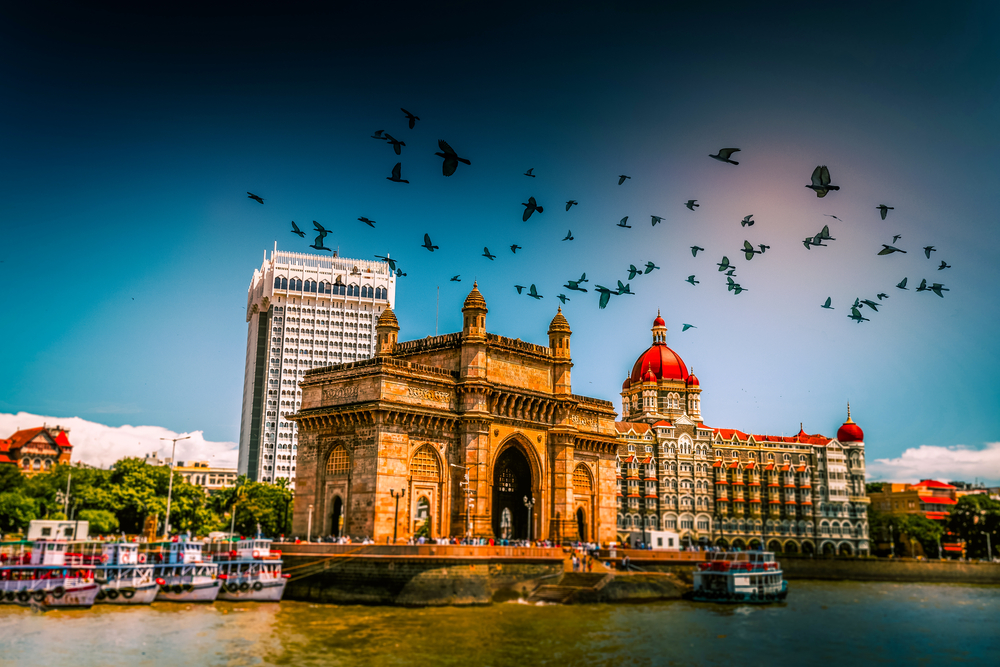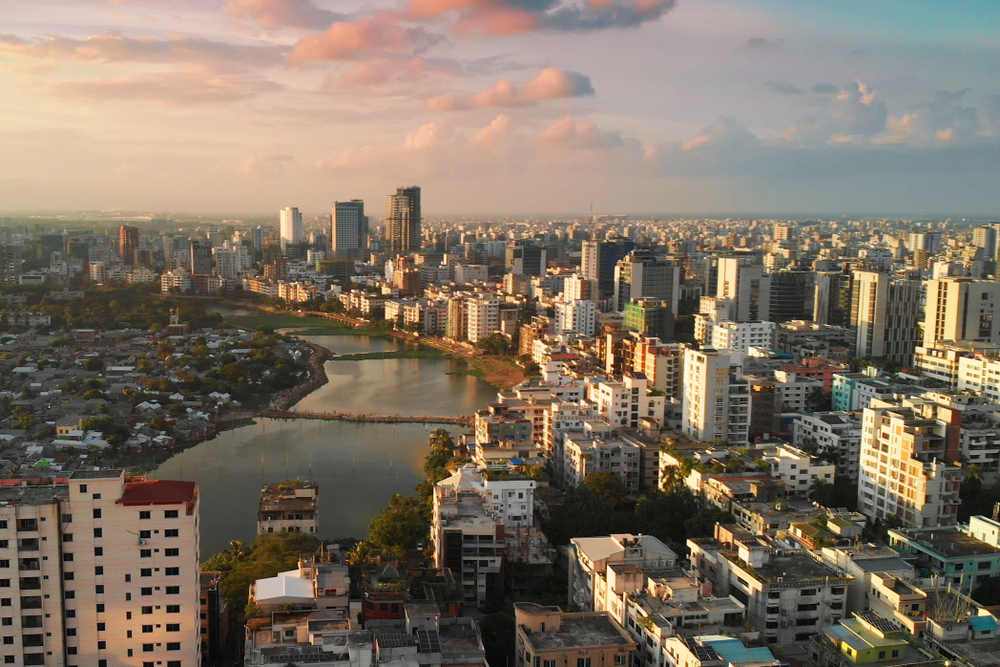India unmasks opportunities beyond residential real estate
India’s well-documented struggles to contain the pandemic have seen residential sales plunge. But with potential for growth in several areas, the vast country is well placed to ride out the storm

No one could have predicted the response when the Delta strain of Covid-19 began its global dance of death.
From March to April, India’s masses joined elbow-to-elbow election rallies, some attended by Prime Minister Narendra Modi himself, attended packed cricket games, and crowded into riverbanks for Kumbh Mela.
But by May, the pandemic body count was climbing higher and higher.
“We had been lulled into a false sense of security, thinking that India would not get a second wave,” says Siddhart Goel, senior director and head of research at Colliers India.
As the wave of infection crested, residential sales plunged anywhere from 23 to 62 percent quarter-on-quarter in up to eight major cities—Ahmedabad, Bengaluru, Delhi NCR, Chennai, Hyderabad, Kolkata, Mumbai and Pune—during the second quarter of 2021, analysts from JLL to Knight Frank report. Residential launches also dropped between 20 and 43 percent quarterly even as the housing and urban affairs ministry exhorted developers to “offload, offload, offload” inventories.
But given India’s recent history of delayed possession dates and highly leveraged developments, disenchantment with off-plan projects runs high among property seekers. Developers have also mismatched demand to supply, building prolifically in the high-end to luxury segments while end users sought affordable housing.
“In the last five to seven years, it’s the end users who’ve been moving the markets,” says Ajai A. Kapoor, CEO of real estate service provider 360 Degrees. “Investors had almost disappeared.”
The pandemic has forced developers to follow upfront price practices. In place of hidden discounts, they have dangled a slew of privileges before buyers, including equated monthly instalment (EMI) holidays, cancellations, refunds, rebates, and even free furniture.
With the repo rate at an all-time low of four percent, consumers can take out home loans at historically competitive terms. Price levels in the major markets of Mumbai, Bengaluru, Pune and Chennai dipped by one to two percent annually in the first half of 2021, according to Knight Frank.
State government initiatives have further rationalised price points. Maharashtra, for one, has slashed construction premiums this year by 50 percent, passing on savings to consumers. In a program replicated from West Bengal to Karnataka, the state also reduced stamp duties on home purchases to as low as two percent from September 2020 through March.

“At price points where you have an eligibility to get a loan on which interest is subsidised and available as a tax deduction, it becomes extremely attractive for first-time homebuyers to invest in property rather than rent,” states Amit Khanna, managing director of the advisory firm Phoenix Advisers, in a recent roundtable with proptech giant PropertyGuru.
Sweeteners include few longsighted buoys to the property sector, however. Parliament members have found the country’s INR20 lakh crore (USD308bn) Covid-19 stimulus to be “inadequate” and called on the Union government to provide lasting incentives to small enterprises and households.
“It’s kind of like how you need to protect a small child,” says Goel. “Initially, you need to make sure that the child can stand up, start walking, and start running.”
End users have cleaved into downgraders, typically workers in the currently disadvantaged retail and hospitality industries, and upgraders who have kept their livelihoods. Both groups have been able to move away from congested tier-one cities due to the work-from-anywhere (WFA) and digital schooling phenomena.
Suddenly owners of coveted 4BHKs—four-bedroom flats with halls and kitchens—are scouring for even larger, more open spaces while owners of smaller units are demanding balconies, decks and terraces. “Many Indian homes are not meant for working because we have larger families compared to the western world,” explains Goel.
WFA has motivated affluent households to rent or purchase villas, bungalows and freestanding second homes in self-contained townships as well as tier-two and tier-three cities. Some have moved to vacation spots like Goa and Chennai altogether.

“I know almost eight to 10 families who have been living their life out of these second-home locations over the last year,” says Kapoor.
Yet the residential sector received only four percent of the estimated USD2.9bn investments that flowed into Indian real estate in H1 2021, according to Colliers. Non-banking financial companies (NBFCs) have avoided deploying capital into the housing sector for a few years now. Also, the Real Estate Regulation and Development Act (RERA) continues to curb ill-gotten developer cashflows.
Institutional investors have skirted purely residential developments for mixed-use sites and integrated townships: essentially any development with income-generating components. Two of India’s biggest transactions during the pandemic—RMZ Corp’s USD2bn deal with Brookfield Asset Management and Blackstone Group’s USD1.5bn portfolio acquisition from Prestige Estate—involved commercial assets.
“Funds will not invest money at a land acquisition stage, especially for housing,” says Goel. “Having said that, the financing coming from international private equity funds into all these other asset classes does have an indirect knock-on effect on the real estate sector.”
Among income-generating assets, data centres show the most potential, having received investments of about USD161m in H1 2021. Last year, the Indian colocation data centre industry absorbed a record 102 megawatts (MW) of power, rivalling user markets in Europe and the Americas.
“We still haven’t started using data in the amounts used in those locations,” says Goel. “The future for the data centre market is going to be huge.”

While Indian occupiers joined the worldwide pivot to hybrid work, offices still outshone homes to account for almost 35 percent of investments in H1 2021. With Indian e-commerce growing 27 percent yearly, the industrial and warehousing sector attracted USD775m of investments in H1 2021—the highest of any year since 2016.
To ensure unhindered movement of goods nationwide, India is increasing the freight share of its railways to 45 percent by 2030. It is also redeveloping, through public-private partnerships, more than 120 railway stations into airport-like, live-work-play-and-ride hubs, unlocking real estate values in their surrounds.
The pandemic years may yet prove to be footnotes, in hindsight, to the inevitability of progress in the subcontinent. Barring economic disruption, the Indian housing market will become a trillion-dollar industry by 2030
Returns on commercial investments are generally less susceptible to long-term rental defaults than their residential counterparts, Kapoor argues. Investors can reap about seven to eight percent in ROI on commercial property, compared to two to 2.5 percent on residential.
The housing sector could find more enthusiastic investors in 32 million Indians scattered worldwide, including 13 million NRIs. “For most non-resident Indians, there’s always sentiment attached to real estate investment,” says Goel. “That’s why they would typically like to invest money in locations where they originate, where their families are.”

With only 9.5 percent of India’s billion-strong populace vaccinated so far, the next 12 months presuppose uncertainty. The residential sector could still see incremental price rises alongside increased launches in the next few months, predicts Kapoor. “While both things are contrary, the pricing has been so low in the last five to seven years, and the new supply is expected to be of far greater quality.”
The pandemic years may yet prove to be footnotes, in hindsight, to the inevitability of progress in the subcontinent. Barring economic disruption, the Indian housing market will become a trillion-dollar industry by 2030.
“The general feeling is that if the real estate market didn’t crash during these times,” says Kapoor, “then it never will.”
The original version of this article appeared in Issue No. 168 of PropertyGuru Property Report Magazine.
Write to our editors at [email protected].
Recommended
Why everyone is moving to Selangor and Johor: Malaysia’s real estate comeback
Malaysia’s upturn in fortunes is especially prevalent in secondary destinations such as Selangor and Johor
Penang’s silicon boom: How the US-China tech war is supercharging local real estate
Penang’s booming semiconductor industry has created ripples within the local real estate sector
New leader, new opportunities: How Hun Manet is shaking up Cambodia’s real estate game
Hun Manet is overseeing decent economic growth and widening access to the country’s real estate market for foreigners
Singapore embraces inclusive housing reforms amid resilient demand
The Lion City’s regulatory strength continues to exert appeal for international investors








